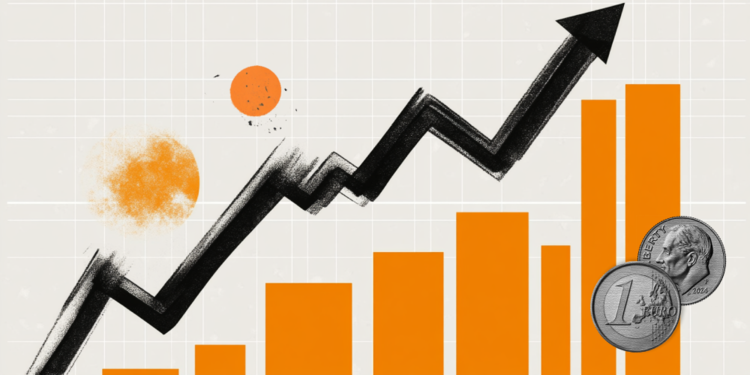### The Recent Surge in EUR/USD: An Overview
The EUR/USD currency pair has been capturing the attention of traders lately, jumping to near the 1.1380 mark. This surge stems largely from a discernible weakness in the US Dollar (USD), mainly driven by accumulating concerns regarding the country’s fiscal imbalances.
US President Trump’s ambitious tax reform plan is projected to exacerbate the national debt by an astounding $3.8 trillion over the next decade, as highlighted by the nonpartisan Congressional Budget Office. This looming economic burden raises eyebrows among investors, pushing the USD to the sidelines.
### The Impact of US Fiscal Policies
Financial markets have reacted to Trump’s new tax bill with considerable unease. Encompassing tax cuts coupled with heightened spending allocations, particularly on defense and immigration, the bill puts a spotlight on the nation’s fiscal health. Investors are apprehensive that such policies may prompt additional downgrades in the US credit rating.
In fact, just last week, Moody’s took the unprecedented step of downgrading the US sovereign credit rating from Aaa to Aa1. This decision was attributed to a long-standing inability of both political parties to set effective measures to address soaring fiscal deficits and ever-increasing interest costs.
### What This Means for Borrowing and Spending
Should the trend continue, the potential for a long-term issuer rating downgrade could escalate borrowing costs for the US government, which would, in turn, limit spending capabilities for future generations and hike borrowing expenses considerably.
Moreover, Trump’s tax reforms are expected to stir consumer inflation expectations. If tax cuts for households indeed lead to increased spending, it may boost price pressures, prompting Federal Reserve (Fed) officials to think twice about reducing interest rates in light of such changes.
Current Federal Reserve officials have signaled that monetary policy adjustments might not be suitable at this time, citing unusually high uncertainty surrounding the economic outlook under the Trump administration.
### EUR/USD Rally Amid EU-US Trade Uncertainties
Despite the uncertainty surrounding EU-US trade negotiations, the EUR/USD has maintained its upward momentum. The Euro has notably strengthened even as discussions over a bilateral trade agreement appear to lose traction. U.S. trade negotiators have indicated that discussions may stall unless the EU offers concessions unilaterally.
A report from the Financial Times noted that U.S. Trade Representative Jamieson Greer may inform European Commission Commissioner for Trade Maroš Šefčovič that the EU’s recent proposals don’t align with U.S. expectations, particularly concerning tariff reductions and digital trade concessions.
### Economic Data Influencing Market Sentiment
On the economic front, data from the Eurozone regarding Q1 Negotiated Wage Rates has shown a significant decline, falling to 2.38% from the 4.12% observed in the last quarter of 2024. This marked slowdown could encourage the European Central Bank (ECB) to consider further interest rate cuts in its upcoming June policy meeting.
However, ECB policymaker and Bundesbank President Joachim Nagel expressed caution regarding additional rate cuts during discussions at the G7 meeting in Canada. He emphasized that after seven interest rate cuts, the current deposit rate of 2.25% no longer constitutes a restrictive environment for the Eurozone’s economic growth.
### Technical Analysis: EUR/USD on the Ascendancy
From a technical perspective, EUR/USD is poised for further gains, recently trading near 1.1350. The outlook appears bullish as the pair holds above the 20-day Exponential Moving Average (EMA), which hovers around 1.1255.
The Relative Strength Index (RSI) has also crept up towards 60.00, indicating that bullish actions might intensify should the index surpass this level. Specifically, traders are eyeing the April 28 high of 1.1425 as a significant resistance level, while the psychological barrier of 1.1000 serves as a key support point for Euro bulls.
### Upcoming Economic Indicators: HCOB Composite PMI
In the realm of upcoming economic indicators, the HCOB Composite PMI, which measures private business activity across the Eurozone, is one to watch. This monthly index combines data from various sectors, providing insights into the economic landscape.
The recent PMI report revealed that the index came in at a disappointing 49.5, down from the anticipated 50.7 and the previous value of 50.4, which implies a contraction in overall business activity. Such dismal figures are likely to impact perceptions of the Euro’s strength going forward.


